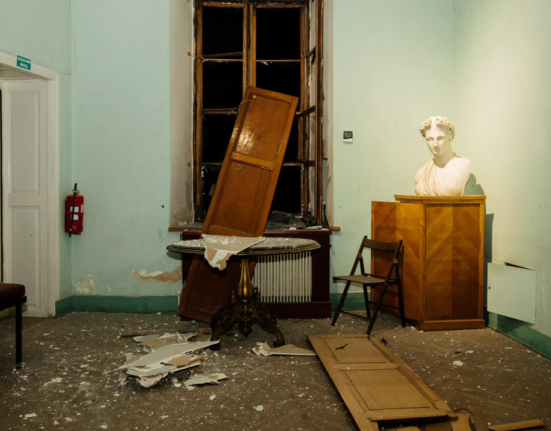Salvador Dalí Alegoria al Mar (Allegory of the Sea) , 1976 Mixed media, watercolor, gouache and … [+]
From antiquity to living masters, the little sibling of TEFAF-Maastricht, Europe’s defining celebration of fine art, antiquities, and jewelry, is the only New York fair to offer a comprehensive art historical journey that draws A-list celebrities, collectors, institutions, and discerning aesthetes. The Maastricht presentations have embraced more Modern and Contemporary art in recent years, and newer works take center stage in New York.
The 10th U.S. edition of The European Fine Art Foundation (TEFAF) opened to ticket holders today and is on view through May 14 at the Park Avenue Armory in New York. At $55 ($25 for students) for one-day entry, TEFAF offers the best value, showcasing museum-quality art and radiating enchantment that transports us away from daily drudgery and geopolitical horror. The well-heeled crowd last night underscores its position as the best art fair in the U.S. It’s my Met Gala.
The space, built in 1861 for the first volunteer militia to respond to President Lincoln’s call for troops, transforms into an elegant arena for art-gazing adorned with floral displays that act as art themselves, especially complementing works such as Ukrainian artist Aljoscha’s Phylogenetic Utopias – Bioism Engineering of the Ethical Bliss (2024), presented by Beck & Eggeling International Fine Art of Düsseldorf, Germany. Like an arrangement of cut flowers, the large-scale conceptual sculpture, composed of 36 elements created with partly-pigmented poly(methyl acrylate) or PMA, colorless, organic polymers, commonly used in leather finishing and textiles, conveys the co-existence of fragility and ferocity.
Aljoscha, Phylogenetic Utopias – Bioism Engineering of the Ethical Bliss (2024)
While New York is inarguably the world art capital, with an abundance of galleries, museums, and auction previews to sate all tastes, there is a nimiety of art fairs, too often mimicking the 1980s retail suburban shopping experience but made tedious to accommodate the appetite of an increasingly feigned existence where gratification is instant and fleeting. TEFAF is the antidote for an ailing world where image and conformity surpasses imagery and ingenuity.
My practice each year has been to make multiple rounds of the stands, taking note of what stirs emotion, and devising a theme that inspires me across an array of works. Yesterday, I was drawn deeply into art that embodies various interpretations of myth, allegory, and other re-imaginings of human existence.
We accompany Salvador Dalí on his self-referential voyage in Alegoría Al Mar, (Allegory of the Sea) painted 13 years before his death at age 84 in 1989, presented by Di Donna of New York. We embark on the upper canvas, where our eyes feast on two yellow lobsters, reminding us of Aphrodisiac Telephone (1938), conjuring Dalí’s repeated analogy between sex and food. The bare branches of a wishbone-like tree of a life with a heart shape in its roots pierces the lobsters, as its trunk overlaps a rectangular sea with quartz crystal-like waves while a naked man dives to grasp the hands of a mermaid. The rectangular symbolism reminds us of adolescent subversion of the male gaze in Dalí’s Woman at the Window (1925), which may have been influenced by Caspar David Friedrich’s rückenfigur (German for “figure from the back”), Woman at a Window (1822).
Our eyes wander back to the roots in the lower canvas to find a human figure walking toward the heart center. An abstracted figure that looks plucked from a line drawing appeared seated to the left, while a man on horseback trots toward center from the right, a homage to the 1964 Modern Library edition of The First Part of The Life and Achievements of Don Quixote De La Mancha by Miguel de Cervantes Saavedra, and illustrated by Dalí.
As we peer down the canvas, we encounter precious stones and rocks laid in a deliberate pattern at the tree base, a reminiscence of the exquisite and uncanny collection of 39 pieces of fine jewelry Dalí created between 1941 and 1970 as a tribute to his wife, collaborator, and muse Gala Dalí, who shared authorship of many artworks. In the context of this painting chronicling so many decades of the artist’s oeuvre, we also travel back to The Eye of Time, an eye-shaped brooch that a small watch with its face in the iris and
The platinum, diamond, ruby and blue enamel treasure with a mechanical Movado watch movement, crafted by Argentina-born jeweler Carlos Alemany, who ran a workshop in the St. Regis Hotel in New York. Viewing the composition as a whole, we recall shapes, colors, and compositions of earlier works Persistence of Memory (1931) and Diurnal Fantasies (1932).
Di Donna confirmed today that Alegoria al Mar and another Dalí it showed at the fair, L’oeil du peintre (1941), quickly sold to private collectors.
Chiharu Shiota State of Being (Book) 2023 Metal frame, book, thread 7.2 x 31.4 x 17.7 inches Photo … [+]
Childhood trauma of experiencing death is reborn as a new beginning in Berlin-based Osaka-born performance and installation artist Chiharu Shiota’s State of Being (Book) (2023), presented by Gana Art of Seoul, Korea. We feel the pulsations of the human vascular system in the sculpture made of a metal frame, pages of a German-language book, and thread that depicts arteries and veins that carry blood throughout the body. The work is must-see in the flesh, electrifying us with a sanguine melange of attraction and repulsion.
Roman statuette of Minerva with her owl, c.1st century AD Bronze Height: 15.3cm
There are many works that deliberately feature myths, both traditionally like the Roman statuette of Minerva with her owl, a bronze statuette (circa 1st century AD) at the Charles Ede of London stall, and with a Contemporary elucidation, such as Claude Lalanne’s L’Enlèvement d’Europe (The Rape of Europa) (2007) patinated bronze, presented by Ben Brown Fine Arts of Venice, London, and Hong Kong. The two works are connected specifically through Jupiter.
Minerva, the Roman goddess of wisdom, medicine, the arts, poetry, handicrafts, and later, war, burst (fully armed and in full armor) from the head of Metis, who had been swallowed by Jupiter. Jupiter had sex with titaness Metis, causing her to shapeshift in an effort to escape him. Her pet owl connects her to her Greek complement, Athena, and the “owl of Athena” or the “owl of Minerva” grew into a ubiquitous Western symbol of knowledge, wisdom, perspicacity, and erudition.
The Rape of Europa myth has served as a creative force for centuries, most notably by an eponymous sixteenth century painting by Titan. In Greek and Roman mythology, Europa is abducted by the King of the gods (Zeus in Greece and Jupiter in Rome) in the form of a bull, and he carries her from her birthplace in Phoenicia to the island of Crete, where he rapes her and she gives birth to twins.
Claude Lalanne L’Enlèvement d’Europe 2007 patinated bronze 76.38 x 78.75 x 31.5 inches
Many other works convey subtle or implied mythic narratives. We gaze into the eyes of a contemporary goddess, surveying Allen Jones Body Armour (Kate) (2013), an editioned photograph of supermodel Kate Moss wearing a glittery gold flake body cast sculpture the Pop artist made in 1978 for an unrealized film. Presented by Galleria d’Arte Maggiore – G.A.M. of Bologna, Italy, Venice, and Paris, the portrait of the ethereal beauty transcends time, evoking Venus, the Roman goddess of love, beauty, sex, fertility, and victory, who is heavily borrowed from the Greek Aphrodite, both likely descendants of Mesopotamian Ishtar, the goddess of love and battle.
Allen Jones, Body Armour (Kate), 2013
Maintaining the goddess quest, we are invited by Mickalene Thomas’ NUS Exotiques #2 (2023) at the Galerie Nathalie Obadia stand. The staged photograph portrait embellished with acrylic, rhinestones, and enamel, amplifies otherwise-non-famous Black women, female beauty, sexuality, desire, and female power. The nude subject exposes her pert posterior, as a string of rhinestones mimics her heart-shaped buttocks. Smiling and at ease, he demands the viewer’s attention as she leans against a geometric cutout backdrop, as if caressing the wall. Thomas describes how her series of large-scale photographic collages of women, sometimes referencing art historical titans such as Picasso and Manet, “celebrates the beauty and power of Black women through the prism of popular culture and collective history, past and present.” The idea for the series emerged from Thomas’ study of Black female eroticism from Jet magazine, and its namesake, the 1950s French publication Nus Exotique.
Mickalene Thomas, NUS Exotiques #2, 2023.







